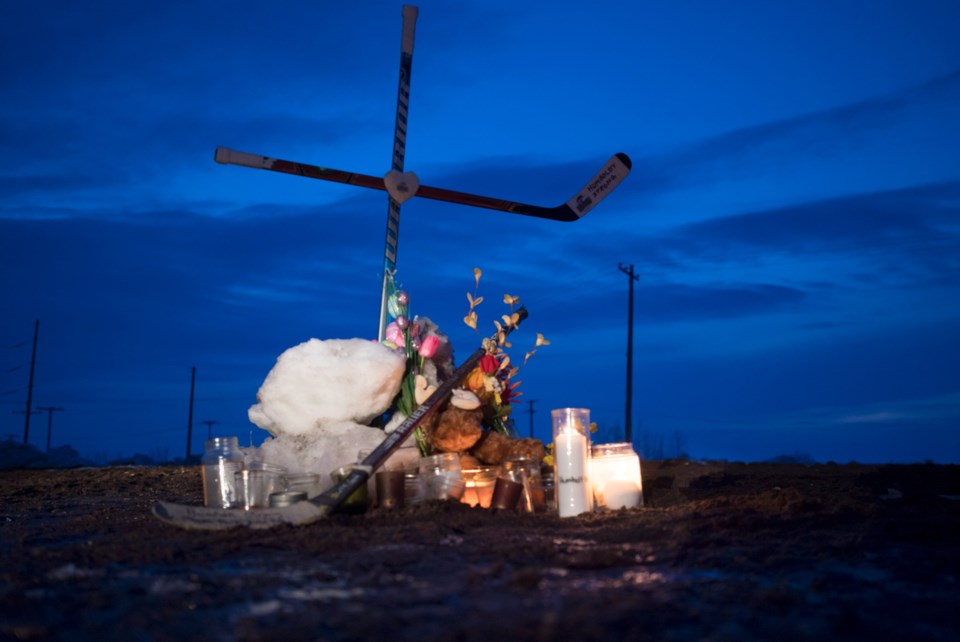On Jan. 30, 1984, a chartered bus lost its brakes and crashed into a ditch while carrying 64 students and teachers from Saanich’s Claremont high school down Mount Washington.
A 16-year-old boy died that day. A 17-year-old succumbed to his injuries a week later. Fifty-nine others were hurt, including eight people whose injuries were described as life-threatening -- skull fractures, punctured lungs, multiple broken bones.
That May, after a 17-day inquest, a coroner’s jury cited a “flagrant disregard for safety provisions.” The aging ConMac Stages bus had brake problems, was corroded and had seats that were poorly anchored, it said. Government regulations and safety inspections were judged inadequate.
In fact, the jury made 26 recommendations on everything from school district policies for field trips to penalties for carriers who flout sound safety practices. There should be more rigorous testing of buses, the jury said. Seatbelts should be mandatory in the first four rows of buses and in the bench seats at the rear. Passengers should be prohibited from standing on school buses. First aid training should be available to students in Grade 7 and above. Students should have to carry ID when travelling by bus. And so forth.
> For more on the Humboldt crash, go to timescolonist.com/more
Some recommendations were implemented (all kids are supposed to be seated on school buses now) and some were not, and some seemed more practical than others, but what shines through 34 years later is the desire of the jurors to do something, which is a natural reaction to a tragedy like the one on Mount Washington or Friday’s horrific crash involving the Humboldt Broncos.
When something so horrific happens, people want to act, if only symbolically. MLAs observed a minute’s silence for the Humboldt victims Monday. Trevor Linden said former and current Vancouver Canucks are organizing a visit to Humboldt. Across B.C., online organ-donation registrations over the weekend were more than six times higher than they were two weeks previous.
A couple of mothers in the Lower Mainland are urging people to wear hockey sweaters and other sports jerseys on Thursday. The Victoria HarbourCats announced all the money from merchandise sales this week will go to the Broncos. Monday afternoon, a GoFundMe drive topped $6 million. This is a tragedy that resonates with anyone in Canada who has ever ridden a bus — or put a kid on a bus — for a game.
It was felt particularly hard by Victoria’s John Wilson. As the owner of Wilson’s Transportation and the co-owner of three local sports teams, he knows this scene intimately. He has a half share of the Peninsula Panthers of the Vancouver Island Junior Hockey League, is the managing partner of the Victoria Grizzlies of the B.C. Hockey League and also has a piece of the HarbourCats of baseball’s West Coast League — all teams stocked with players the same age as those from Humboldt, all of them used to life on the bus.
Talk to former players, many recall those bus trips fondly, remember them as a kind of family time. For Wilson, that latter description was literal: He recalls the good times on the road when his son Andrew, now 30, was a kid. “Back in his minor hockey days, I drove most of his trips.”
Andrew’s team made provincials in Prince Rupert one year; you know it’s a long haul when Prince George is halfway. One of the bus company’s slogans — “The fun is in the getting there” — came from those days.
So, yes, the Humboldt crash hit home.
The thing is, the bus industry is safe, Wilson said, has evolved since 1984. “It’s way more regulated than most people know.” The National Safety Code is highly prescriptive. Since 2010, buses have come out of the plant equipped with seatbelts. Many have GPS recorders.
Electronic-logging devices became mandatory in the U.S. this year and will be required in Canada soon. Drivers who pilot HarbourCats to games in Washington and Oregon are subject to random drug and alcohol testing, as per U.S. Department of Transportation rules. Team coaches and managers have become adept at working out itineraries that keep drivers’ hours down and maximize daylight travel.
Still, it’s impossible to regulate risk out of the world. Sometimes, no matter how badly we want to do something, there’s little we can do.



